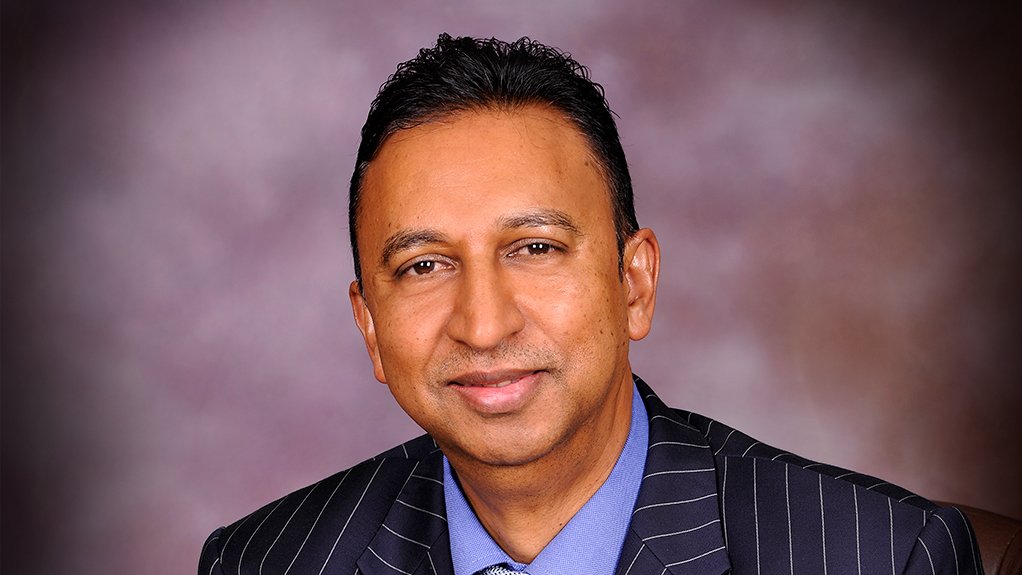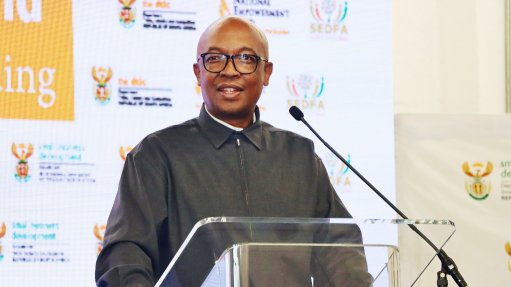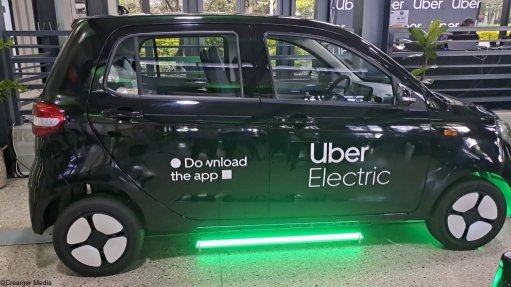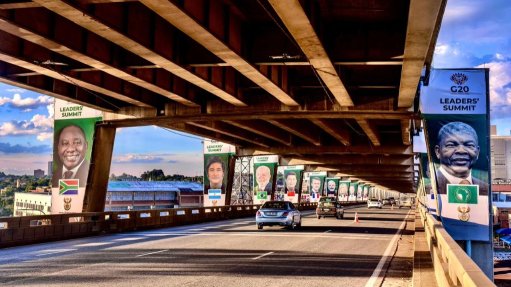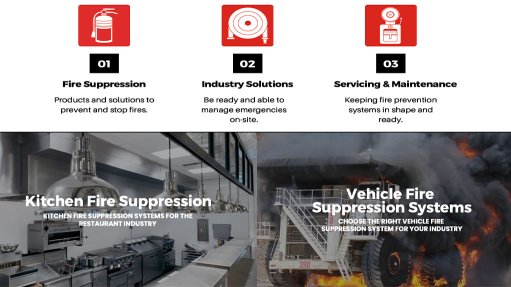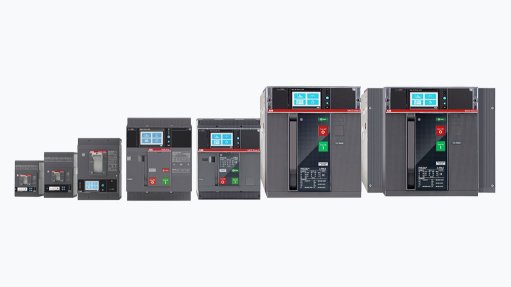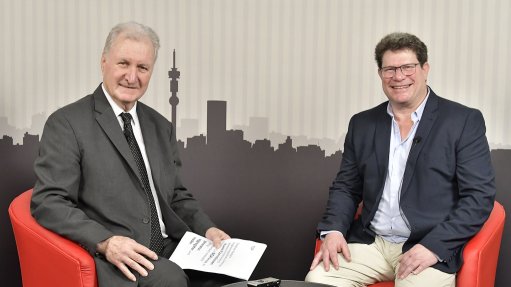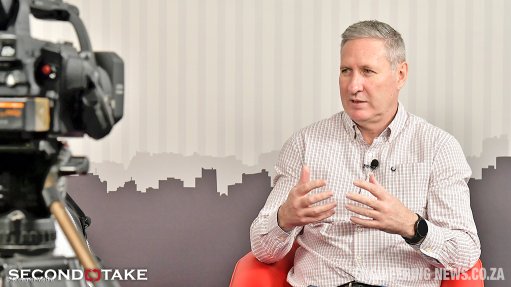Opinion: Demystifying small-scale embedded generation compliance
In this opinion article, Professor Vally Padayachee outlines a proposed pathway for ensuring the safe and affordable adoption of small-scale embedded generation (SSEG) systems, such as rooftop solar. The article outlines the challenges associated with widespread SSEG adoption, including inconsistent policies, high compliance costs, unclear standards, and safety concerns. However, Padayachee also provides a “position paper on a proposed standardised, harmonised, and affordability driven management framework”, which he says has been informed by extensive consultations on the matter.
SSEG systems with a capacity of up to 1 000 kW are transforming how South Africans generate and consume electricity. These systems, particularly rooftop solar PV, allow users to produce their own power, reducing reliance on coal-based electricity and supporting the country’s Integrated Resource Plan 2019 goals. However, their integration into the national grid raises safety concerns for electricity suppliers like Eskom and municipal utilities, as well as for other customers connected to the grid.
In addition, despite their potential, SSEG adoption faces significant barriers. Inconsistent policies among electricity distributors, high compliance costs, and non-technical issues like outdated credit management practices and complex tariff structures deter potential users. Additionally, ambiguities in regulations, such as the absence of specific standards like SANS 10142-1-2, create confusion and increase costs.
To address the safety concerns and to clear the way for ongoing adoption, a framework that categorises SSEG installations into three groups – based on size and complexity, each with tailored compliance requirements to balance safety, affordability, and grid stability – would be helpful.
Firstly, there are smaller low-voltage single-phase systems (≤30 kW). These systems are typically used by residential and small commercial users, which have minimal grid impact. Compliance involves a Certificate of Compliance (CoC) issued by a Department of Employment and Labour- (DEL-) registered electrician, adhering to standards like SANS 10142-1 and NRS 097-2-1. For systems with legacy inverters (older models lacking NRS 097-2 certification), an Engineering Council of South Africa- (ECSA-) registered professional signoff is required. Basic tests, such as anti-islanding and grounding, ensure safety, while online registration portals streamline approvals. Non-exporting grid-tied systems should also be registered, however, to prevent grid disturbances.
Then there are medium-sized low-voltage three-phase systems (30 kW–350 kW) aimed at commercial and industrial users. These systems require enhanced compliance. In addition to a DEL-issued CoC, mandatory ECSA signoffs by professionals (e.g., Professional Technician or Certified Engineer for systems under 100 kW, or Professional Engineer/Technologist for up to 350 kW) are needed, especially for legacy inverters. Grid impact assessments, per NRS 097, are essential to ensure stability. Systems exceeding 100 kW require direct registration with the National Energy Regulator of South Africa (Nersa). Accredited solar PV training for electricians is mandatory, and customer education on tariffs and credit management is emphasised.
Finally, there are larger medium-voltage three-phase systems (350 kW–1 000 kW). These systems are industrial systems and pose significant grid risks, necessitating stringent compliance. Requirements should include a DEL-issued CoC, as well as ECSA signoffs by Professional Engineers or Technologists, detailed grid studies (e.g., fault levels and power quality), and Nersa registration for systems over 100 kW. Accredited solar PV training and structural integrity assessments for rooftops should also be mandatory.
Tackling Four Key Compliance Issues
Firstly, ECSA signoffs. In the absence of SANS 10142-1-2, many distributors require ECSA-registered professional signoffs for safety, particularly for systems over 30 kW. Under the proposed framework, smaller systems (≤30 kW) require DEL-issued CoCs, supplemented by training, suffice, while larger systems benefit from ECSA oversight to ensure grid safety.
Secondly, while the DEL asserts that CoCs issued by registered electricians meet all safety requirements, the framework argued that grid-tied and hybrid systems require additional ECSA oversight for systems over 30 kW to address grid-specific risks.
Owing to inconsistent configurations, whereby grid-tied, off-grid, and hybrid systems are often misclassified, the framework clarifies compliance for each. Off-grid systems should follow SANS 10142-1, grid-tied systems should adhere to NRS 097, and hybrids require dual compliance. Non-exporting grid-tied systems must be registered to prevent misclassification as off-grid.
Finally, non-technical barriers relating to issues such as high fixed charges, complex time-of-use (ToU) tariffs, and unaffordable credit deposits can deter adoption. Therefore, the framework promotes customer education and innovative tariff structures to make SSEG more accessible.
It also encourages users to remain grid-tied rather than going off-grid, highlighting the benefits of reliability, cost savings, and supporting South Africa’s energy transition. Grid-tied systems provide backup power during cloudy days or system failures, eliminating the need for costly batteries. Users can save 20% to 30% on installation costs by optimizing system size and leveraging ToU tariffs for low-cost grid power during off-peak times. Surplus solar power can generate revenue through net billing, feed-in tariffs, or wheeling, while strengthening the grid and reducing coal reliance.
Implementation Recommendations
To operationalise the framework, several actionable steps with targeted timelines are proposed, including:
- Reinstate SANS 10142-1-2 by Q4 2025: The Department of Energy and Electricity (DEE) and South African Bureau of Standards (SABS) should finalise revisions to clarify compliance for all SSEG configurations.
- Model SSEG policy by Q1 2026: Nersa and the South African Local Government Association should issue a standardised policy to ensure consistent distributor requirements.
- Online portals by Q3 2026: Electricity distributors should launch national online registration systems to streamline approvals and CoC submissions.
- Train 5 000 electricians by 2027: The South African Photovoltaic Industry Association and DEL should train electricians through programmes like the Solar PV GreenCard to enhance compliance.
- Subsidies and affordability: Government and donor funding (e.g., GIZ) should subsidize training and portal costs, while ECSA should publish transparent fee structures for signoffs by Q1 2026.
- Proposed fee structure: CoC fees range from R1 000–R2 000 for all configurations up to 1 000 kW.
- ECSA signoff fees for systems over 30 kW up to 1000 kW range from R3 000 to R6 000, for basic oversight excluding grid impact studies.
- Travel costs are passed through transparently, and additional costs (e.g., structural assessments) are justified separately.
- Global lessons and local impact: The framework draws on global best practices, such as Australia’s streamlined approvals for systems up to 30 kW, Germany’s grid impact assessments for systems over 30 kW, and the US’s rigorous standards for medium-voltage systems. By aligning with these models, South Africa can reduce costs, enhance safety, and boost SSEG adoption. Online portals, as demonstrated in Australia, can process over 90% of applications efficiently, while training programmes ensure competent installers.
To counter concerns relating to the cost of ECSA signoffs and online portals, the framework asserts that long-term savings and donor funding make these investments feasible. For non-exporting grid-tied systems, registration is justified to prevent voltage fluctuations, ensuring grid stability. Non-technical barriers, like complex tariffs, are critical to address through education to drive market growth.
Such a framework offers a clear, practical, and affordable path to mainstreaming SSEG in South Africa. By standardising compliance, reducing costs, and addressing non-technical barriers, it paves the way for a safer, more sustainable energy future. With legislative adoption targeted for 2026, stakeholders, including Eskom, municipalities, Nersa, and customers, can collaborate to power South Africa’s energy transition, ensuring a resilient and low-carbon grid for all.
Padayachee, who wrote this article in his personal capacity, is a power and energy expert with over 40 years working experience in the industry and academia. He is currently also a Professor of Practice in the FEBE at the University of Johannesburg, the AMEU Strategic Adviser, the Executive Officer of PIESA, a Member of the NRS Association of SA Management Committee. He is a former Senior Executive at City Power, Johannesburg , a former Executive Manager at Eskom, a former Executive Director at GIBB Consulting Engineers, former CEO of PDNA (Mott Macdonald) Resources and Energy, and a former Executive Director and Board Member of Altron Power. He is also currently assisting the National Electricity Crisis Committee.
Article Enquiry
Email Article
Save Article
Feedback
To advertise email advertising@creamermedia.co.za or click here
Comments
Press Office
Announcements
What's On
Subscribe to improve your user experience...
Option 1 (equivalent of R125 a month):
Receive a weekly copy of Creamer Media's Engineering News & Mining Weekly magazine
(print copy for those in South Africa and e-magazine for those outside of South Africa)
Receive daily email newsletters
Access to full search results
Access archive of magazine back copies
Access to Projects in Progress
Access to ONE Research Report of your choice in PDF format
Option 2 (equivalent of R375 a month):
All benefits from Option 1
PLUS
Access to Creamer Media's Research Channel Africa for ALL Research Reports, in PDF format, on various industrial and mining sectors
including Electricity; Water; Energy Transition; Hydrogen; Roads, Rail and Ports; Coal; Gold; Platinum; Battery Metals; etc.
Already a subscriber?
Forgotten your password?
Receive weekly copy of Creamer Media's Engineering News & Mining Weekly magazine (print copy for those in South Africa and e-magazine for those outside of South Africa)
➕
Recieve daily email newsletters
➕
Access to full search results
➕
Access archive of magazine back copies
➕
Access to Projects in Progress
➕
Access to ONE Research Report of your choice in PDF format
RESEARCH CHANNEL AFRICA
R4500 (equivalent of R375 a month)
SUBSCRIBEAll benefits from Option 1
➕
Access to Creamer Media's Research Channel Africa for ALL Research Reports on various industrial and mining sectors, in PDF format, including on:
Electricity
➕
Water
➕
Energy Transition
➕
Hydrogen
➕
Roads, Rail and Ports
➕
Coal
➕
Gold
➕
Platinum
➕
Battery Metals
➕
etc.
Receive all benefits from Option 1 or Option 2 delivered to numerous people at your company
➕
Multiple User names and Passwords for simultaneous log-ins
➕
Intranet integration access to all in your organisation



